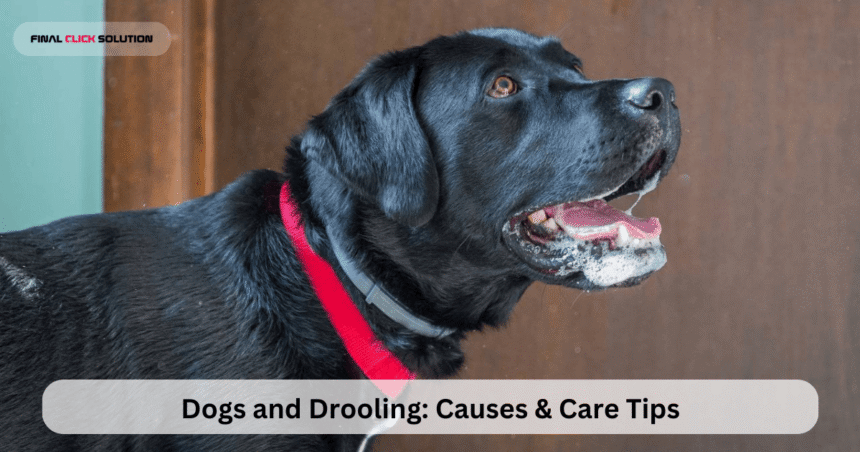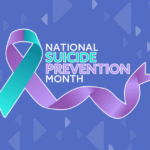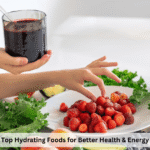Drooling is a natural and common behavior in many dogs. It’s the release of saliva from the salivary glands, and it serves several important functions, including aiding in digestion and keeping the mouth moist. However, when drooling becomes excessive, it can be a sign of an underlying issue that requires attention. Understanding the reasons behind excessive drooling, or ptyalism, in dogs is crucial for their health and well-being. This comprehensive guide will delve into the various causes, symptoms, and solutions related to dogs and drooling.
Normal Drooling vs. Excessive Drooling
First, it’s important to differentiate between normal and excessive drooling. Some breeds, such as Saint Bernards, Basset Hounds, and Mastiffs, are known for being prolific droolers due to their loose jowls and facial structure. This is considered a normal trait for these breeds. Other dogs may drool when they are anticipating a meal, during exercise, or when they are feeling hot. This type of drooling is typically temporary and doesn’t indicate a health problem.
Excessive drooling, on the other hand, is a noticeable increase in the amount of saliva produced or released, often accompanied by other symptoms. If you notice a significant change in your dogs and drooling habits, it’s time to investigate the cause.
Common Causes of Excessive Drooling
There are numerous reasons why a dog might start drooling excessively. These can range from simple, non-threatening issues to serious medical conditions.
- Dental Problems: One of the most common causes of excessive drooling is poor dental health. Tartar buildup, gingivitis, tooth decay, and other dental diseases can cause pain and irritation, leading to increased saliva production. A fractured tooth or an abscess can also be the culprit. If your dog is drooling excessively and has bad breath, a dental check-up is a good first step.
- Foreign Objects in the Mouth or Throat: A foreign object, such as a splinter, a piece of a toy, or a stick, can get lodged in a dog’s mouth, between their teeth, or in their throat. This can cause discomfort, pain, and a reflex to produce more saliva to try and dislodge the object.
- Nausea and Upset Stomach: Just like humans, dogs can feel nauseous, which often leads to drooling. This can be caused by car sickness, eating something they shouldn’t have, or a more serious gastrointestinal issue. It is particularly concerning if you see your dog throwing up and drooling. This combination of symptoms suggests a significant stomach issue that may require veterinary intervention.
- Heatstroke: Dogs don’t sweat like humans; they pant to cool down. Excessive panting can lead to increased drooling. If your dog is in a hot environment and is drooling excessively, lethargy, and a rapid heartbeat, they may be suffering from heatstroke, a life-threatening condition that requires immediate veterinary care.
- Toxin or Poison Ingestion: If a dog is drooling excessively and you suspect they have ingested a toxic substance, seek emergency veterinary care immediately. Many household items, plants, and certain foods are poisonous to dogs and can cause a range of symptoms, including excessive drooling, vomiting, and lethargy.
- Anxiety and Stress: Dogs can experience anxiety and stress in various situations, such as separation from their owner, thunderstorms, fireworks, or a visit to the vet. Excessive drooling can be a physical manifestation of this emotional distress. This is a common and often overlooked cause of a change in your dogs and drooling habits.
- Neurological Disorders: In some cases, excessive drooling can be a symptom of a neurological disorder. For instance, a seizure can cause a dog to drool and shake uncontrollably. If you observe your dog drooling and shaking, it could be a sign of a neurological problem, and a vet visit is imperative.
- Liver or Kidney Disease: Systemic diseases like liver or kidney failure can also cause excessive drooling. As these organs fail, toxins can build up in the body, leading to a variety of symptoms, including drooling, lethargy, and a loss of appetite.
- Rabies: While rare in developed countries, rabies can cause excessive drooling, or “foaming at the mouth.” If a dog is unvaccinated and is drooling excessively, especially if they have been in contact with wildlife, it is an urgent medical concern.
Associated Symptoms and When to Seek Veterinary Care
The presence of other symptoms alongside excessive drooling can help narrow down the potential cause.
- Dog Drooling and Lethargic: A combination of excessive drooling and lethargy suggests a more serious underlying issue. This could be a sign of pain, infection, systemic disease, or a reaction to a toxic substance.
- Dog Drooling and Vomiting: As mentioned earlier, this combination is a strong indicator of a gastrointestinal problem. It could be due to a foreign body obstruction, a severe infection, or the ingestion of a poisonous substance.
- Dog Drooling and Shaking: This can be a sign of a neurological issue, such as a seizure. It can also indicate extreme pain or fear.
- Dog Throwing Up and Drooling: This is another way to describe the same gastrointestinal distress mentioned above. It’s a clear signal that something is wrong with your dog’s digestive system.
If you observe any of these symptoms in combination with excessive drooling, or if your dog is drooling excessively for an unknown reason, it is always best to consult with a veterinarian. They can perform a thorough examination, including blood work, X-rays, or other diagnostic tests, to determine the root cause.
Managing and Treating Excessive Drooling
Treatment for excessive drooling depends entirely on the underlying cause.
- Dental Care: Regular dental cleanings and at-home oral hygiene are essential for preventing and treating drooling caused by dental disease. Your vet may recommend a professional cleaning and may need to extract a damaged tooth.
- Foreign Object Removal: A veterinarian will need to safely remove any foreign object lodged in the dog’s mouth or throat.
- Addressing Nausea: For car sickness, motion sickness medication can be prescribed by your vet. For other causes of nausea, treating the underlying issue, such as dietary indiscretion, will resolve the drooling.
- Poisoning: If poisoning is suspected, immediate emergency care is required. Treatment will involve inducing vomiting, administering activated charcoal, and providing supportive care.
- Managing Anxiety: Behavioral training, desensitization, and in some cases, medication can help manage drooling caused by anxiety. Pheromone diffusers, calming vests, and a safe, quiet space can also be helpful.
- Treating Systemic Diseases: If a systemic disease like liver or kidney failure is the cause, treatment will focus on managing the primary condition. This can involve dietary changes, medication, and ongoing monitoring.
Preventative Measures
While you can’t prevent all causes of drooling, you can take steps to reduce the likelihood of certain issues.
- Regular Veterinary Check-ups: Annual or bi-annual check-ups are crucial for catching health issues early. Your vet can perform a dental exam and check for other signs of disease.
- Good Oral Hygiene: Brushing your dogs and drooling prone breed’s teeth regularly, providing dental chews, and using oral rinses can significantly improve their dental health.
- Dog-Proof Your Home: Keep household chemicals, toxic plants, and other dangerous items out of your dog’s reach.
- Provide a Safe and Calm Environment: Create a space where your dog can feel secure and minimize exposure to known stressors.
Conclusion
While a bit of drool is a normal part of life with many dogs, a sudden or significant increase in salivation is a warning sign that should not be ignored. Dogs and drooling is a topic that requires careful observation from pet owners. By being attentive to your dog’s behavior and recognizing the associated symptoms like dog drooling and vomiting or dog drooling and lethargic, you can ensure they receive the prompt veterinary care they need. Understanding the various reasons behind this behavior, from simple dental issues to more serious health concerns, is the key to keeping your canine companion happy and healthy. Remember, when in doubt, a call to your veterinarian is always the best course of action. They are your best resource for providing an accurate diagnosis and effective treatment plan for your dogs and drooling problem.








